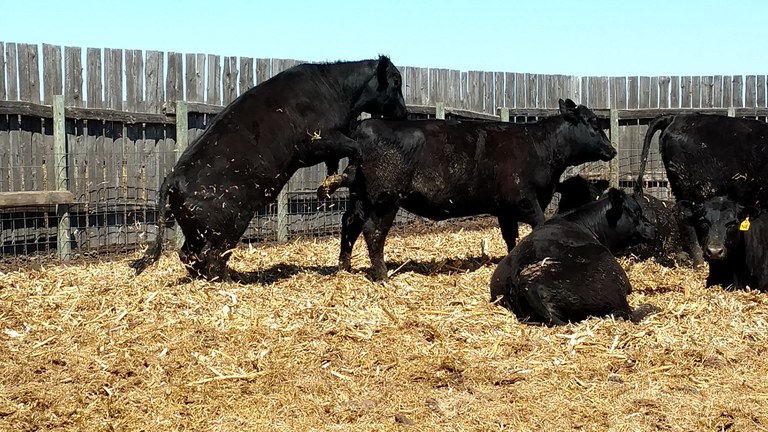Synchronizing Heifers: It will soon be breeding time!
Synchronization protocols are preferred when using artificial insemination (AI). The benefit of AI is being able to breed a large number of heifers to high accuracy calving ease bulls that sire calves that grow well. Synchronization can set up the heifers for timed AI where all heifers are inseminated within a few hours. Theoretically, with timed AI the calving date would be the same day but calving can range from a week before or after the due date.
Synchronization protocols vary but all use a combination of hormones to invoke estrus (heat). These protocols are considered either short-term protocols starting at 7 to 9 days before AI or long-term protocols which start 33-36 days before AI. These protocols use progesterone as either a ‘CIDR’ vaginal insert or as ‘MGA’ provided via the feed.
The progesterone prevents the animal from coming into heat until the progesterone source is removed. If the progesterone source (either CIDR or MGA) is inadvertently removed before the scheduled removal date, the heifer will come into heat early and create a synchronization protocol that fails. Also, this early heat may not be a fertile heat.

Heifers showing signs of estrus (heat).
The short term ‘7-day CO-Synch + CIDR‘ protocol starts with insertion of a CIDR and an injection of GnRH (gonadotrophin releasing hormone) on day 0. On day 7, the CIDR is removed and an injection of Prostaglandin F2 alpha is given. At 54 hours later, all heifers are injected with GnRH and artificially inseminated. Protocol length: 9 days.
The long term ‘MGA-PG’ protocol starts with suppressing estrus by feeding MGA at the rate identified on the manufacturer’s label for 14 days. At 19 days after MGA removal from the ration, an injection of Prostaglandin F2 alpha is given. At 72 hours later, all heifers are injected with GnRH and artificially inseminated. Protocol length: 33 days.
The CIDR can be used in long term protocols instead of MGA. When heifers are bred on pasture, the CIDR is usually easier to manage.
The CIDR and drugs will need to be purchased at a veterinary clinic or supply store while the MGA is purchased from a feed manufacturer.
The National Beef Reproductive Task Force has webpages that describe additional synchronization techniques for heifers and cows at:
http://beefrepro.unl.edu/resources.html
http://beefrepro.unl.edu/pdfs/2016MF2573.pdf
http://beefrepro.unl.edu/pdfs/synctips.pdf
Helpful diagrams are also available here:
http://beefrepro.unl.edu/pdfs/Protocols%20for%20Sire%20Directories%202016.pdf
While a 100% conception rate due to synchronization and AI is desired, the reality is that 60-65% conception to AI is excellent with 50% conception not unrealistic. Conception rates can be 70-85% with great technique, good nutrition, careful handling, and proper timing.
Karl Hoppe
Area Extension Livestock Specialist


